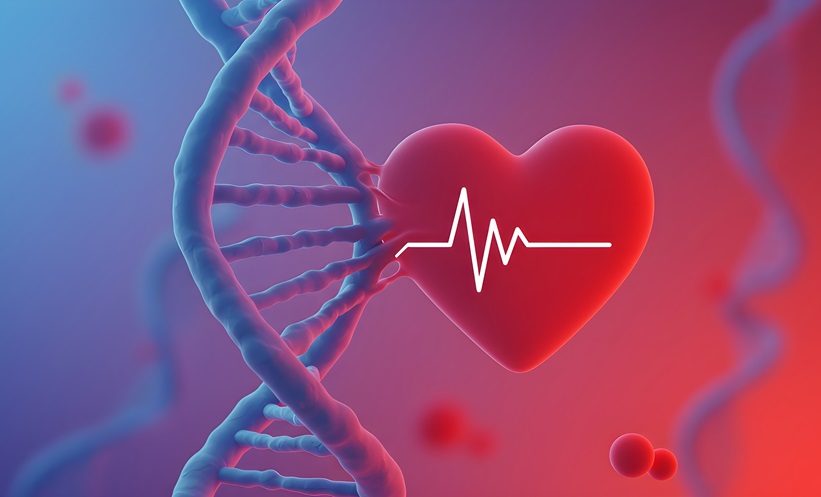![]()
Erratum:The Role of Harm Reduction in Smoking Cessation Strategies
Interviewees: Nebojsa Tasic, Emil Toldy-Schedel
Original citation: EMJ. 2022;7[2]:28-32.
Date correction published: 02.09.22
The interview with Nebojsa Tasic and Emil Toldy-Schedel in EMJ 7.2 (pages 28-32) was originally published on 16.06.2022. Since then, an erratum has been made. On pages 29-30, “Across Europe, more than two-thirds of smokers say they are keen to give up, yet fewer than 1 in 20 are successful” originally read “Across Europe, more than two-thirds of smokers say they are keen to give up, yet fewer than one in 20% are successful” incorrectly. This has now been updated.
EMJ apologises for the error and any inconvenience caused.
![]()
Interviewees: Nebojsa Tasic,1 Emil Toldy-Schedel2
1. Dedinje Cardiovascular Institute, Belgrade, Serbia
2. St. Francis Hospital, Budapest, Hungary
Disclosure: The authors have declared no conflicts of interest.
Acknowledgements: Medical writing assistance was provided by Amanda Barrell, Brighton, UK.
Disclaimer: The opinions expressed in this article belong solely to the named interviewees.
Support: The publication of this article was funded by Philip Morris International.
Citation: EMJ. 2022;7[2]:28-32.
Interview Summary
Smoking kills more than 7 million people every year and is associated with approximately one in four deaths from cardiovascular diseases (CVD). Cigarette smoke affects platelet function, fibrinolysis, endothelial function, oxidative processes, inflammation, lipid oxidation, and vasomotor function, contributing to the development of atherosclerosis and superimposed thrombotic phenomena. According to the European Society of Cardiology (ESC), smoking cessation is the most cost-effective CVD prevention intervention, and all smokers should be encouraged and supported to quit. However, many people fail to stop, even after a cardiac event. For those who are unwilling or unable to stop due to nicotine addiction and psychological elements, there is going evidence that harm reduction strategies can help. Varies studies have shown that switching to smoke-free products such as heat-not-burn (HNB) systems, which exposes people to fewer carcinogens and toxicants than cigarette smoke.
In this article, Nebojsa Tasic, Cardiovascular Research Center, Dedinje Cardiovascular Institute, Belgrade, Serbia, and Emil Toldy-Schedel, General Director, St. Francis Hospital, Budapest, Hungary, discuss the role of harm reduction strategies in smoking cessation, and which patients may benefit from switching to smoke-free products. They also outline the current data, identify gaps in the evidence base, and set out a vision for a world where neither smoking cessation nor tobacco harm reduction strategies are necessary.
LEADING WORLDWIDE KILLER
Worldwide, tobacco use causes more than 7 million deaths every year, a death toll that could increase to 8 million by the end of the decade if global trends continue unabated.1 It is the single biggest risk factor for lung cancer, causing 70% of cases,2 and is a leading cause of CVD morbidity and mortality.3
Tasic said: “We are living in a world of war and pandemic but, for the last 100 years, smoking has proven to be one of the most dangerous risk factors. It contributes to CVDs and to many different types of cancer, including lung, oesophageal, throat, and tongue cancers. This is really important: CVDs are killing around 50% of the adult population in Europe,4 and cancers account for around one in six deaths worldwide.5 Taken together, smoking is one of the leading killers.”
It also has a significant impact on quality of life. “This habit puts a lot of limits on people. They are restricted to certain areas to smoke, making them feel like an animal in a cage. The only place they can smoke freely is at home, but when they do that, they endanger their loved ones,” he said, explaining that passive smoking just as dangerous as active smoking.
SMOKING, CARDIOVASCULAR DISEASE, AND CESSATION
Cigarette smoke affects platelet function, fibrinolysis, endothelial function, oxidative processes, inflammation, lipid oxidation, and vasomotor function, contributing to the development of atherosclerosis and superimposed thrombotic phenomena. While many of these pathways are reversable, atherosclerotic plaque formation is not.6 This makes smoking a significant CVD risk factor. It causes half of all avoidable deaths in smokers, 50% of which can be attributed to atherosclerotic cardiovascular disease.6 It is also one of the world’s leading risk factors for disability adjusted life-years, second only to high systolic blood pressure.7
Talking about the overall impact of smoking on CVDs, Tasic said: “When people have these conditions, they cannot contribute to society as they did before, which is terrible for them. Around half of people with stroke, myocardial infarction, or severe peripheral arterial disease cannot work anymore. The problems are even greater when we combine smoking with diseases like diabetes, which can lead to accelerated atherosclerosis, premature myocardial infarction, and strokes.” Furthermore, he went on, younger smokers who have diabetes are much more prone to myocardial infarction in the earlier stages of life, which can leave them having to cope with a comorbidity at a relatively young age.
Overall, the average life expectancy of a life-long smoker is 10 years shorter than that of a non-smoker. However, that risk can be halved if the person stops smoking before the age of 50, and almost normalised if they quit before 30.7 As such, the 2021 ESC Guidelines on Cardiovascular Disease Prevention in Clinical Practice state that stopping smoking is potentially the most effective of all preventive CVD measures. They say cessation leads to substantial reductions in myocardial infarctions and death at all ages, and recommend healthcare professionals encourage all smokers to quit.7
SUPPORTING CESSATION
“Smoking cessation is the absolute target for us because we know it benefits all the organs, but especially the lungs and the cardiovascular system. After just a few months it will have a huge impact on the person’s health,” said Tasic, explaining that smoking cessation should start with the implementation of the ESC ‘Five As’ rule:6
- Ask: systematically enquire about smoking status at every opportunity.
- Advise: unequivocally urge all smokers to quit.
- Assess: determine the person’s degree of addiction and readiness to quit.
- Assist: agree on a smoking cessation strategy, including setting a quit date, behavioural counselling, and any pharmacological support.
- Arrange: schedule a follow-up appointment to discuss progress and offer any additional support that might be necessary.
Persistence and building trust are crucial parts of this process, Tasic went on: “I believe the most important factor is having a strong connection between doctor and patient. When I keep explaining the advantages and disadvantages of stopping, the quality-of-life impact, and the increased longevity, on the first visit, the second visit, and the third visit. Slowly but surely, they come round to the fact that they have to quit and that it is the only way to make their lives better.”
Of course, this approach does not always work, and many people continue to smoke even after experiencing a cardiac event. Toldy-Schedel said that in his native Hungary, more than 56% do not stop after a stroke, 70% do not stop after a peripheral heart disease diagnosis, and about 40% do not stop after a heart attack. 8 “We are talking about a huge population,” he said.
Across Europe, more than two-thirds of smokers say they are keen to give up, yet fewer than 1 in 20 are successful.6 Asked why so many failed in their attempts, Toldy-Schedel explained that nicotine was extremely addictive. Tasic agreed: “Quitting smoking is one of the most difficult things someone can do. Throughout my career, I have met a lot of alcoholics and many of these people have said it was harder to stop smoking than it was to stop drinking.”
Both experts said there was also a psychosocial element that made the habit hard to kick. “Smoking is part of their regular activities, part of their daily routine,” said Tasic, adding that the silent nature of CVDs also played a role. “Low health education is a big problem. When people feel healthy, with no symptoms or clinical signs, they feel good and so do not even consider stopping.”
Broadly speaking, they said, their patients fell into one of three groups: those who want to give up and are able to; those who want to give up but fail; and those who have no intention of giving up. Each of these groups requires a different approach.
For group one, pharmacological interventions such as nicotine receptor partial agonists or nicotine patches, alongside counselling and support, is recommended.7 However, those who fall into group two may relapse several times and eventually “give up giving up.”
“There is one group who would like to stop smoking, and who we should give as many chances as we can with psychological and pharmacological support. But there is a much bigger proportion who maybe want to change but cannot because they are dependent on nicotine. We have to give them alternatives,” said Toldy-Schedel, describing it as an ethical issue.
HARM REDUCTION
Nicotine addiction may be the reason many people are unwilling or unable to quit, but, as Tasic and Toldy-Schedel explained, it is not the reason smoking is so dangerous. Cigarette smoke contains thousands of chemicals, including at least 70 carcinogens. Under combustion, tobacco releases toxicants that cross the alveolar barrier and enter the bloodstream, where they elicit systemic oxidative stress and inflammatory responses.9 “It is not the nicotine that kills people,” said Toldy-Schedel.
While both experts said that smoking cessation was preferable, they agreed that there was a role for harm reduction strategies. This well-established concept in areas such as substance and alcohol misuse has been shown as far back as 2008 to be capable of reducing morbidity and mortality where abstinence is not feasible.10 If applied to smoking, it can mean encouraging those who are unwilling or unable to stop to switch to smoke-free products such as electric cigarettes (e-cigarettes) or HNB systems.
HNB systems, for example, heat rather than burn the tobacco. This creates an aerosol that contains nicotine and tobacco flavour but with significantly fewer harmful and potentially harmful chemicals (HPHC) and cardiovascular toxicants than cigarette smoke.
A number of in vitro, in vivo, and clinical studies have suggested that this approach has the potential to reduce risk, when compared to smoking cigarettes.11-14 Participants in a 6-month clinical study who predominantly used Philip Morris International’s (PMI; New York City, New York, USA) HNB product (≥70% NHB), for example, experienced substantially reduced exposure to a broad range of HPHCs, while still having the same nicotine exposure as those who continued smoking cigarettes. The researchers also found that smokers who switched to HNB for the study duration showed improvements in clinical risk endpoints associated with CVDs, such as lipid metabolism, endothelial function, oxidative stress, and platelet function.14
With a growing evidence base, last year’s ESC smoking cessation guidelines covered the use of smoke-free products for those who are unable to quit. The authors pointed to evidence suggesting that e-cigarettes are probably less harmful than tobacco and more effective than nicotine replacement therapy in smoking cessation. They also noted that HNB are lower in toxicants than regular cigarettes, though warned that the systems do still contain tobacco.7
In the USA, the U.S. Food and Drug Administration (FDA) has authorised the marketing of PMI’s HNB product, IQOS, as a modified risk tobacco product. The body pointed to evidence showing that switching completely from combusted cigarettes to the IQOS significantly reduced exposure to 15 specific HPHCs. In addition, it cited a toxicological assessment that found that, when compared with cigarette smoke, the product’s aerosol contained considerably lower levels of potential carcinogens and chemicals that are toxic to the respiratory or reproductive systems. However, it is important to note that the modified risk tobacco product authorisation does not mean that the regulator has deemed the system safe or ‘FDA-approved’.15
SECOND LINE INTERVENTION
In his practice, Tasic said he recommended HNB products as a pathway to cessation. He has witnessed success with this approach, he said, explaining that while some of his patients simply swapped from cigarettes to HNB, a larger proportion went on to quit completely, usually within 1–3 months. “I think it is very important to have this transition period,” he said, adding that the evidence base does suggest that there are some advantages to switching from cigarettes to HNB. “It is important from a psychological point of view; they feel as though they have achieved something and that they are doing something for their health.”
It is about giving everyone the opportunity to give up, said Toldy-Schedel. “If someone cannot stop smoking even though they have tried several times, or they cannot give up because of their nicotine addiction, we are advising (smoke-free) equipment as a secondary option. We know that the things that cause cancer and create well-known problems with the cardiovascular system are not as present in heated tobacco as they are in a cigarette. We have that data.”
CLIMBING THE HIERARCHY OF EVIDENCE
Smoke-free products such as e-cigarettes and HNB systems are a relatively new development, and there are still significant gaps in the evidence base. Toldy-Schedel said that while there were multiple studies showing what HNB products do not contain, he would like to see more data on what they do contain. He also warned of the potential pitfalls of recommending e-cigarettes as part of harm reduction strategies. “In Hungary, you can buy all kinds of nicotine fluid, from China or wherever. It means you can use e-cigarettes without knowing what you are smoking. We would like to close the door on that because we would like to control what people are using so we are in a better position to help them,” he said.
Tasic said there were huge amounts of evidence to show that HNB systems and e-cigarettes were less toxic than conventional cigarettes. “What we need now are sone double-blind, prospective studies. It is really important that we start to measure the advantages. If we want to recommend something to our patients, we really need a strong scientific base.” As part of this drive to continue to build the evidence base, Tasic and his colleagues are currently in the planning stages of a study of the impact of HNB products on CVD outcomes. “At the end of the day, this is about reducing cardiovascular risk to decrease the number of adverse cardiovascular outcomes. If we manage to decrease the risk in patients with high or very high risk, then we will have achieved something very good. Otherwise, it is all just cosmetic,” he said.
A better understanding of the thresholds between group one smokers, who can quit with support, and group two, who would benefit from harm reduction strategies, would also be useful in daily practice, said Toldy-Schedel. “If someone can stop smoking, we have to give them a chance to change their habits because cessation is always going to be better than the alternatives,” he explained. He is part of a multi-disciplinary team, which includes psychologists and psychiatrists, that is building and validating a questionnaire that they hope will eventually help them to stratify people between the pathways.
FUTURE DIRECTION
As more evidence on the benefits of harm reduction strategies in tobacco use accumulates, Tasic hopes it will help drive uptake of the approach in primary care. “The general practitioners are the doctors who should advocate for the harm reduction concept because they are the first touch point for the patient. They are important because the patients already believe in them. We need to educate not just the patients but the primary healthcare physicians,” he said. The approach could help people reduce their CVD risks before they suffer a cardiac event, and meet secondary care physicians like himself and Toldy-Schedel. “They are the gatekeepers. Let’s put this concept of harm reduction at the beginning of the tunnel, not at the end of the tunnel when it is already getting dark,” he said.
Both doctors said they looked forward to a future where neither smoking cessation programmes nor harm reduction strategies were needed. The world is changing rapidly, said Tasic. “Only 50 years ago, people would smoke everywhere. In the old movies you see people smoking on aeroplanes and even in hospitals, but when you see it now, it looks so strange. Maybe in 50 years from now, cigarette smoking will seem that strange to our grandchildren and great-grandchildren,” he said.
Toldy-Schedel echoed his colleague’s sentiments. “Twenty years ago, everyone smoked at the dinner table, and now that’s a shameful thing to do. Habits are changeable,” he said.








